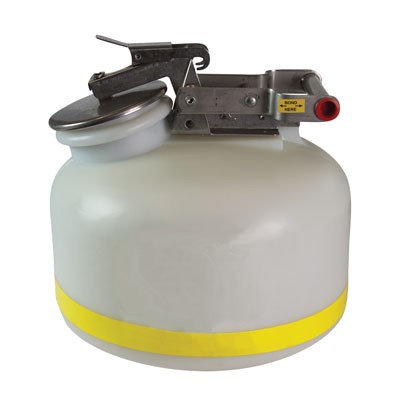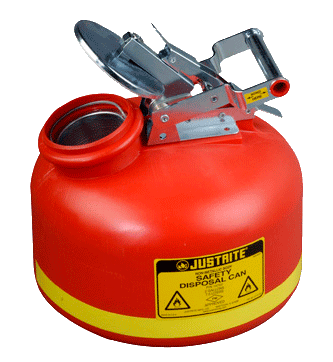Cutting-edge Industrial Wastewater Treatment Solutions: Securing the Environment
Wiki Article
Exactly How Fluid Waste Disposal Works: A Thorough Overview of Techniques and Technologies Used

Summary of Fluid Waste Kind
The intricacy of liquid waste types demands an extensive understanding of their attributes and ramifications for disposal. Liquid waste can broadly be classified into numerous types, including industrial, community, farming, and harmful waste. Each classification shows distinct homes, calling for specific monitoring methods to mitigate ecological and health and wellness risks.
Industrial fluid waste stems from manufacturing processes and typically contains a variety of impurities, such as heavy steels, solvents, and natural substances. Community fluid waste, mostly making up wastewater from households and commercial facilities, has natural issue, nutrients, and virus (industrial wastewater treatment). Agricultural liquid waste, consisting of drainage from ranches, may contain fertilizers, chemicals, and animal waste, presenting dangers to water top quality and communities
Harmful liquid waste is defined by its poisoning, sensitivity, or potential to trigger injury. This category includes substances like acids, bases, and particular chemicals that require strict handling and disposal procedures. Comprehending these diverse fluid waste kinds is essential for creating effective disposal methods and guaranteeing conformity with environmental policies. Proper classification and characterization are essential for executing proper treatment methods and decreasing the unfavorable influence on public health and wellness and the environment.
Physical Therapy Methods

Screening is the preliminary action, where larger fragments and debris are gotten rid of from the fluid waste utilizing screens or grates. In sedimentation containers, heavier bits resolve at the base, creating a sludge layer, while the cleared up liquid can be additional dealt with.
Filtration is an additional necessary technique that includes passing the liquid via porous products, such as sand or membrane layers, to catch smaller bits. This action improves the quality of the liquid, making it suitable for subsequent treatment procedures.

Chemical Therapy Methods
Chemical treatment techniques are essential for effectively taking care of fluid waste, specifically in dealing with dissolved and colloidal contaminants that physical methods might not appropriately eliminate. These strategies make use of various chemical representatives to counteract, precipitate, or transform harmful compounds right into less hazardous types.One common technique is coagulation and flocculation, where chemicals such as alum or ferric chloride are included in advertise the aggregation of suspended particles. This process boosts sedimentation, permitting for easier removal you could check here of the resulting sludge. In addition, oxidation procedures, utilizing agents like chlorine or ozone, are employed to break down complicated natural compounds and microorganisms, providing the waste more secure for discharge or additional therapy.
Neutralization is another vital strategy, which readjusts the pH of acidic or alkaline waste streams to neutral degrees, stopping potential harm to downstream systems and the setting. Moreover, advanced oxidation processes (AOPs) use combinations of oxidants and ultraviolet light to break down relentless contaminants, attaining a higher level of therapy efficiency.
Biological Treatment Procedures
Biological therapy procedures play an essential duty in the management of liquid waste by using microbes to disintegrate natural issue and reduce contaminant levels. These processes can be broadly categorized right into cardiovascular and anaerobic therapies, each utilizing particular microbial neighborhoods to achieve reliable waste deterioration.Cardiovascular therapy entails making use of oxygen to help with the failure of natural materials by bacteria. This procedure is frequently carried out in turned on sludge systems, where oygenation containers provide a helpful environment for microbial growth, causing the oxidation of organic toxins. The resultant biomass can be separated from treated effluent via sedimentation.
In contrast, anaerobic treatment occurs in the lack of oxygen, counting on various microorganisms to break down raw material. This technique is especially helpful for high-strength waste, as it generates internet biogas, a renewable resource source, while lowering sludge manufacturing. Technologies such as anaerobic digesters are frequently employed in municipal and industrial applications.
Both anaerobic and aerobic biological therapies not just minimize the environmental influence of fluid waste however additionally assist in source recovery, making them necessary components of lasting waste administration techniques. Their flexibility, effectiveness, and effectiveness sustain their widespread implementation across different sectors.
Arising Technologies in Disposal
Cutting-edge techniques to liquid waste disposal are rapidly evolving, driven by improvements in innovation and a raising focus on sustainability. Among these emerging modern technologies, membrane bioreactors (MBRs) have obtained traction for their capability to integrate biological treatment with membrane filtration, resulting in high-grade effluent that can be recycled in numerous applications. MBRs allow smaller sized footprints and extra effective procedures contrasted to typical systems.An additional appealing growth is using anaerobic food digestion combined with nutrient recuperation technologies, which not only deals with fluid waste however also produces biogas and recovers valuable nutrients like nitrogen and phosphorus. This dual go right here benefit boosts resource effectiveness and minimizes ecological influence.
In addition, progressed oxidation processes (AOPs) are being taken on for the destruction of complicated organic toxins. These approaches utilize effective oxidants and drivers to break down pollutants at the molecular level, supplying a very efficient remedy for tough waste streams.
In addition, the assimilation of fabricated intelligence and artificial intelligence in waste administration systems is optimizing operational efficiency and anticipating upkeep, causing lowered prices and improved environmental conformity. These innovations show a substantial shift towards more reliable and lasting liquid waste disposal practices.
Verdict
In conclusion, reliable fluid waste disposal requires a comprehensive understanding of numerous techniques and modern technologies. By continuously progressing these methods, it comes to be possible to deal with the expanding difficulties connected with liquid waste, inevitably contributing to environmental protection and resource healing.Fluid waste disposal is an essential aspect of ecological monitoring, needing a comprehensive understanding of different methods and technologies customized to different waste kinds. Liquid waste can extensively be classified right into a number of kinds, consisting of industrial, municipal, farming, and unsafe waste. Agricultural fluid waste, consisting of drainage from farms, may consist of plant foods, pesticides, and pet waste, posing risks to water top quality and environments.
Different physical therapy methods play a crucial function in managing liquid waste efficiently - industrial wastewater treatment.In final thought, effective fluid waste disposal necessitates an extensive understanding of numerous strategies and innovations
Report this wiki page